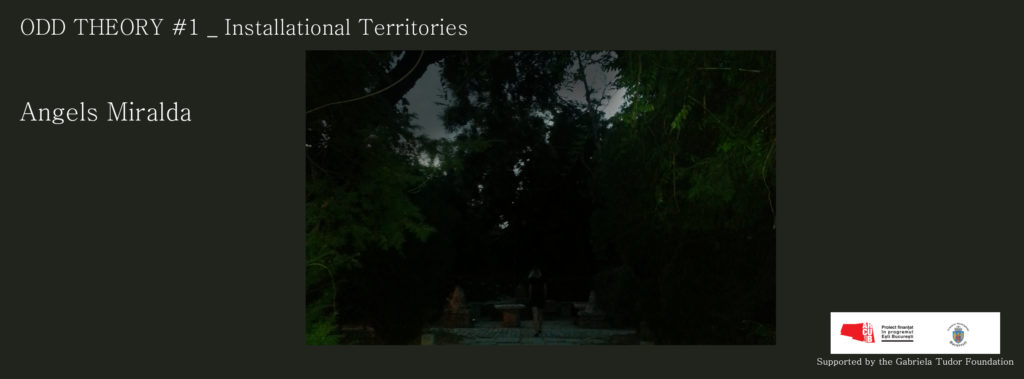#1 Installational territories

#1 INSTALLATIONAL TERRITORIES
Angels Miralda
5-7.8.2015 6-8pm
Grădina Viitorului
DAY 1 An Introduction to the Subject
There’s a discrepancy of dates in the history of installation. In this session I will outline a problem with the usage of the word “installation” that begins to show the vague history and problematics of the word. I will introduce the notion of an undefined contemporary usage and its roots in the 1970’s. After a short historical note, we will discuss the alignment and concurrency of the use of installation with the discourse surrounding the rise of the curator. The aim is to outline what the problem is, how historical facts align themselves and show this factor, and to position it within a global framework.
Readings:
Daniel Buren, “The Function of the Studio”, 1971
Rosalind Krauss, “Sculpture in the Expanded Field”, 1976
Anton Vidokle, “Art Without Artists?”, 2010
DAY 2 Contamination
Starting from the idea of installation as contamination (from Michael Fried) we can begin to examine the relationship between its form and content. In this session we will discuss the idea of art as politics, Hito Steyerl’s essay on Occupation will play a central role and we will discuss the roles of political/offensive occupation vs. biological contamination or parasitism. This ties into the colonial notions of installation and occupation. I will introduce a case study I did on the 1989 exhibition ‘Magiciens de la terre’ to see how exhibition ideology (namely an installational framework) ties into neo-colonialism and hegemonic globalisation. From this we will move on to define the institutional status of installation.
Readings:
Michael Fried, “Art and Objecthood”, 1967
Hito Steyerl, “Art as Occupation”, 2011
Lucy Steeds (Ed.), “Magiciens de la terre: Making Art Global Part 2”, 2013
DAY 3 An Institutional Status
A look at how non-installational works (i.e.. net art, digital photography, film) become assimilated to installational tendencies within the institution. An evaluation of why this happens and what installation means in an institutional context. The role of conceptual art in making this possible and the concurrent influence on collecting and politics. We will examine what it means to live in what Peter Osborne calls a post-conceptual condition and how it fits into a “conspiracy of art” as in the popular book by Baudrillard. Does installation mirror a neo-liberal global lifestyle, wit complicity, individualism, and invisible profiteers in its contemporary theoretical formation? But can we avoid it while participating in a contemporary art world? Does it mirror the economy in this way? From this I’d like to return to Hito Steyerl and ask again whether the Museum is a battlefield.
Readings:
Jean-Luc Baudrillard, “The Conspiracy of Art”, 2005
Peter Osborne, “Anywhere or Not At All”, 2013
Hito Steyerl, “Is the Museum a Battlefield?” 2013, 36:48